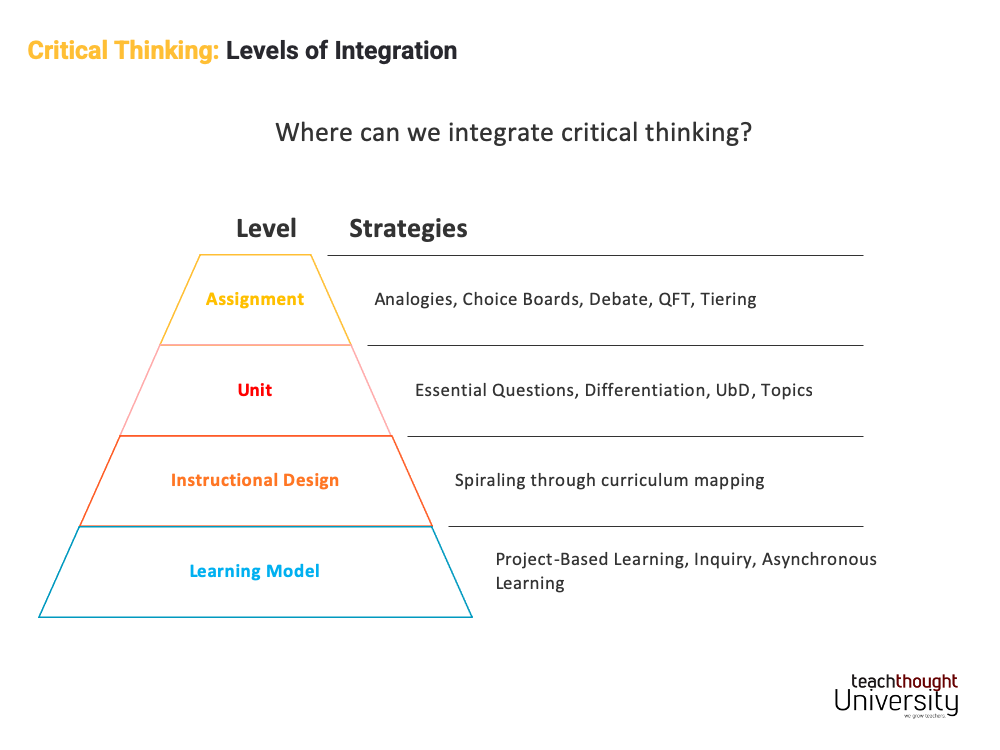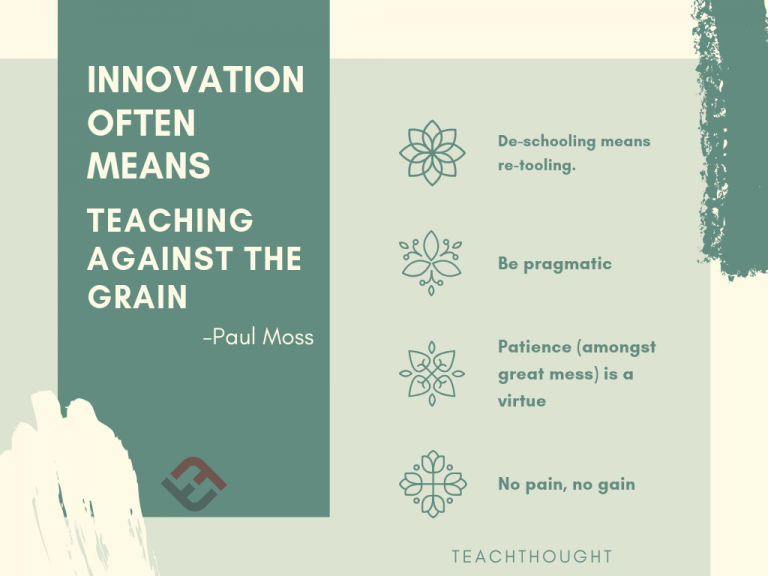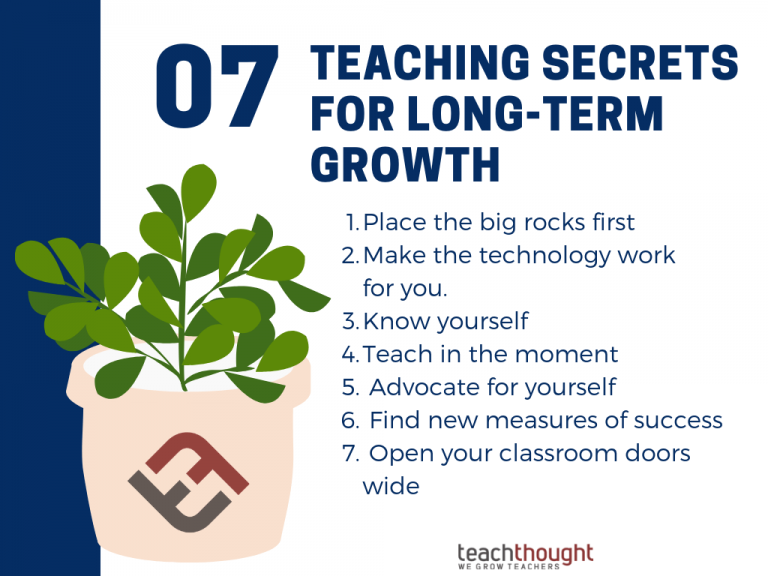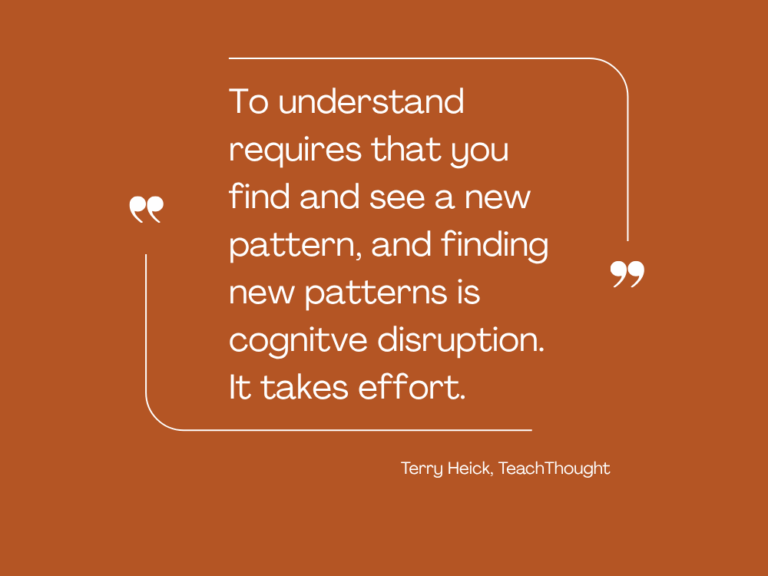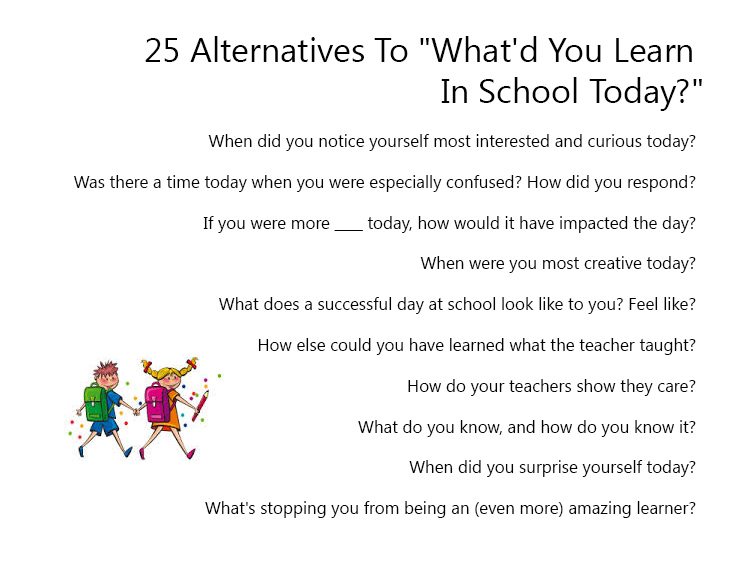
How To Flip Lesson Design By Moving The Learning Objective To The End
by TeachThought Staff
There would be few teachers haven’t been advised to publish lesson objectives at the beginning of every lesson.
After all, this is a signal for students where the learning is going, and can help keep teachers and students on the same page. But for many teachers, this has largely been an ineffective strategy, with students just mindlessly writing them down and rarely independently checking their learning against them as the lesson unfolds.
John Dabell succinctly articulates a possible reason: It could be argued, that we need to accomplish the learning first before we can understand what the learning objective is and what the knowledge and understanding relates to. Many teachers concur, and after years of adhering to the expectation of writing down learning objectives (Los) at the start of lessons, at the beginning of the year, maybe this is a chance to try something different.
What Benefits Students More, Foresight Or Hindsight?
A more effective strategy could be for students to engage with the lesson objectives is to get students to add a title to each activity they complete–one that forces them to think about the purpose of the task: the task’s objective. Each of these moments serves as a mini-plenary, with students then asked at the end of the session to add up these mini-plenaries to decide on the overall purpose of the lesson and to check their progress against it.
There would be few teachers around the world who haven’t been advised to ensure that each lesson ends with a plenary. The rationale is fool-proof: inviting students to piece together the learning in the lesson as a means of checking to see if progress has been made. But there’s a large risk in waiting until the end, because in that great length of time many students may have fallen off the learning path.
This is why more frequent ‘assessment for learning’ is emerging as a ‘go-to’ strategy for effective teachers. There are of course many ways to check progress whilst students are working, but adding titles not only provides an opportunity to check, but also an opportunity to deepen the learning experience.
Have We Been Writing Lessons Backwards All Along?
Observe the example below:

When I was wandering the room, I asked the student to expand on the learning objective he had written for the task. He considered what the activity involved, and it forced him to reflect, and deliberate on its purpose. He then added more detail.
By asking him to consider the purpose of the task, he was then better placed to be able to judge his proficiency in it. He could have written the objective down at the beginning of the activity, and checked progress against that, but for me, he deepened his learning by having to process the task in a way that required him to summarize and synthesize it, in order to create a title.
The feedback provided in the image below will engage the student to reflect on the purpose of the task at a much later date, perhaps reinforcing the learning even more by challenging the student to not just remember, but to analyze the work done in order to compose a more specific title. 
This is the same task processed by another student, and validates the effectiveness of a ‘title’ strategy. Simply providing the title wouldn’t have facilitated this student’s thinking about the task, as my objective for the activity was merely to develop the ability to ‘show’ a reader’s actions rather than ‘tell’ them. The fine tuning of adding the word ‘emotions’ in this student’s title demonstrated a further personal connection and focus with the task.

Some students prefer to add the title after their work:
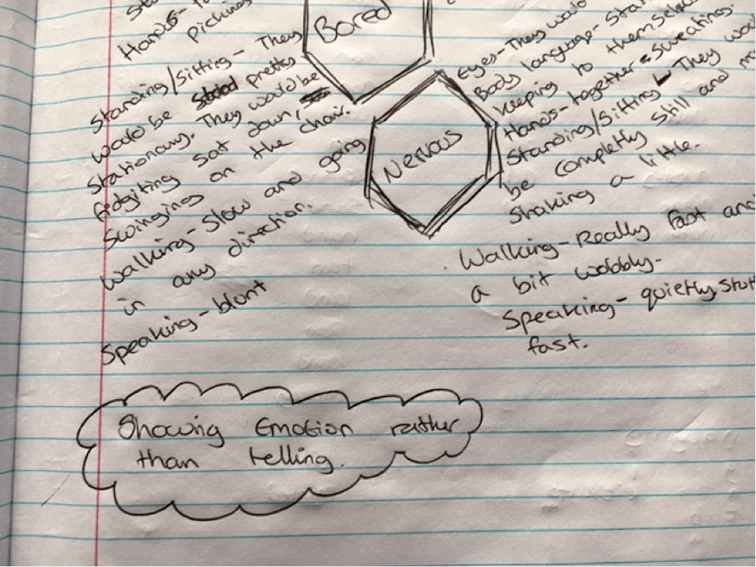
Asking Students To Explain The Purpose Of The Activity After It’s Done
Creating this routine certainly didn’t happen overnight. Students couldn’t believe that I wasn’t giving them a title from the outset. Armed with only the date, many students felt consternation with this practice, especially those highly-organized students who hate to leave space not knowing how much room they need for the title later on. Perhaps significantly, students groaned at the expectation of having to think about the task once completed, suggesting to me that they were used to not taking
Students couldn’t believe that I wasn’t giving them a title from the outset. Armed with only the date, many students felt consternation with this practice, especially those highly organized students who hate to leave space not knowing how much room they need for the title later on. Perhaps significantly, students groaned at the expectation of having to think about the task once completed, suggesting to me that they were used to not taking
Perhaps more significantly, students groaned at the expectation of having to think about the task once completed, suggesting to me that they were used to not taking time to evaluate their work independently, and potentially only superficially completing work. But gradually they began to accept the rationale behind it. Of course, some students still need prompting to generate a concise (and sometimes precise) title, but most are getting significantly better at it.
Conclusion
Adding a title to a task promotes more thinking from the students and encourages them to make connections with what they are learning. Every time they carry out this mini-plenary activity, they reinforce the lesson objective, and they can more easily check their progress against it.
